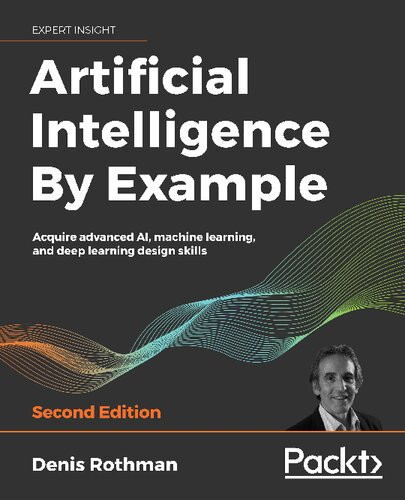

Most ebook files are in PDF format, so you can easily read them using various software such as Foxit Reader or directly on the Google Chrome browser.
Some ebook files are released by publishers in other formats such as .awz, .mobi, .epub, .fb2, etc. You may need to install specific software to read these formats on mobile/PC, such as Calibre.
Please read the tutorial at this link: https://ebookbell.com/faq
We offer FREE conversion to the popular formats you request; however, this may take some time. Therefore, right after payment, please email us, and we will try to provide the service as quickly as possible.
For some exceptional file formats or broken links (if any), please refrain from opening any disputes. Instead, email us first, and we will try to assist within a maximum of 6 hours.
EbookBell Team

0.0
0 reviewsKey Features
•AI-based examples to guide you in designing and implementing machine intelligence
•Build machine intelligence from scratch using artificial intelligence examples
•Develop machine intelligence from scratch using real artificial intelligence
Book Description
AI has the potential to replicate humans in every field. Artificial Intelligence By Example, Second Edition serves as a starting point for you to understand how AI is built, with the help of intriguing and exciting examples.
This book will make you an adaptive thinker and help you apply concepts to real-world scenarios. Using some of the most interesting AI examples, right from computer programs such as a simple chess engine to cognitive chatbots, you will learn how to tackle the machine you are competing with. You will study some of the most advanced machine learning models, understand how to apply AI to blockchain and Internet of Things (IoT), and develop emotional quotient in chatbots using neural networks such as recurrent neural networks (RNNs) and convolutional neural networks (CNNs).
This edition also has new examples for hybrid neural networks, combining reinforcement learning (RL) and deep learning (DL), chained algorithms, combining unsupervised learning with decision trees, random forests, combining DL and genetic algorithms, conversational user interfaces (CUI) for chatbots, neuromorphic computing, and quantum computing.
By the end of this book, you will understand the fundamentals of AI and have worked through a number of examples that will help you develop your AI solutions.
What you will learn
•Apply k-nearest neighbors (KNN) to language translations and explore the opportunities in Google Translate
•Understand chained algorithms combining unsupervised learning with decision trees
•Solve the XOR problem with feedforward neural networks (FNN) and build its architecture to represent a data flow graph
•Learn about meta learning models with hybrid neural networks
•Create a chatbot and optimize its emotional intelligence deficiencies with tools such as Small Talk and data logging
•Building conversational user interfaces (CUI) for chatbots
•Writing genetic algorithms that optimize deep learning neural networks
•Build quantum computing circuits
Who this book is for
Developers and those interested in AI, who want to understand the fundamentals of Artificial Intelligence and implement them practically. Prior experience with Python programming and statistical knowledge is essential to make the most out of this book.
Table of Contents
1.Getting Started with Next-Generation Artificial Intelligence through Reinforcement Learning
2.Building a Reward Matrix Designing Your Datasets
3.Machine Intelligence Evaluation Functions and Numerical Convergence
4.Optimizing Your Solutions with K-Means Clustering
5.How to Use Decision Trees to Enhance K-Means Clustering
6.Innovating AI with Google Translate
7.Optimizing Blockchains with Naive Bayes
8.Solving the XOR Problem with a FNN
9.Abstract Image Classification with CNN
10.Conceptual Representation Learning
11.Combining RL and DL
12.AI and the IoT
13.Visualizing Networks with TensorFlow 2.x and TensorBoard
14.Preparing the Input of Chatbots with RBMs and PCA
15.Setting Up a Cognitive NLP UI/CUI Chatbot
16.Improving the Emotional Intelligence Deficiencies of Chatbots
17.Genetic Algorithms in Hybrid Neural Networks
18.Neuromorphic Computing
19.Quantum Computing